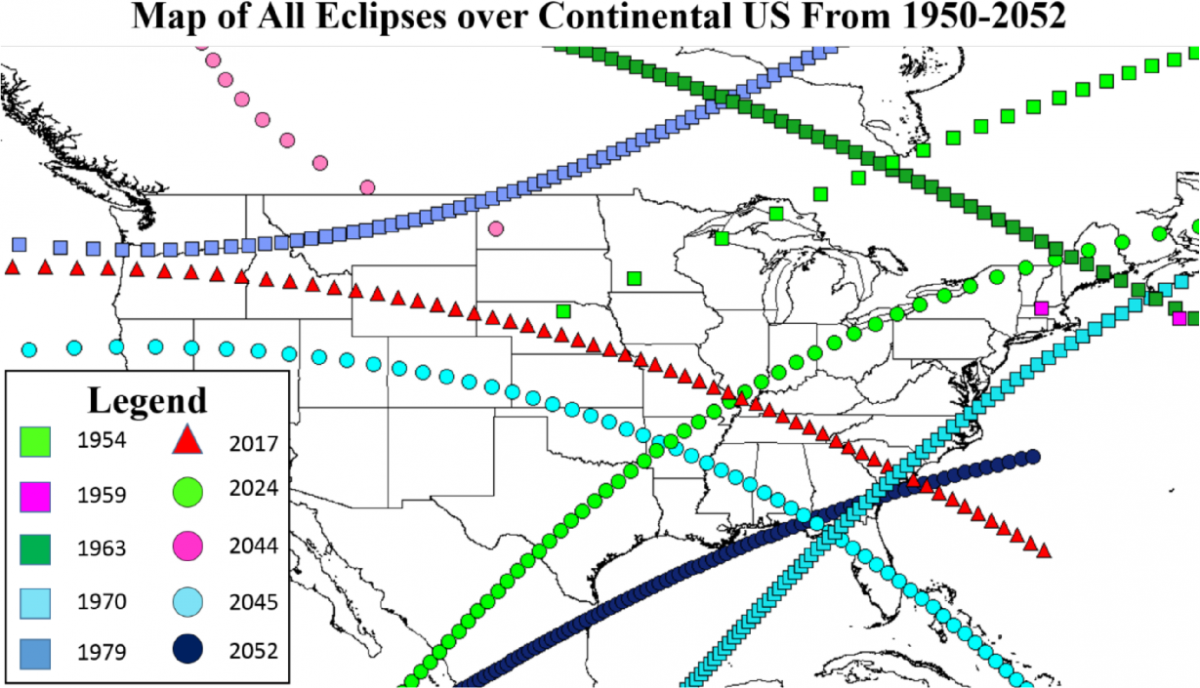
On 21 August 2017, a total solar eclipse caused the shadow of the moon to traverse the United States from Oregon to South Carolina in just over 90 minutes. Although the ionospheric effects of solar eclipses have been studied for over 50 years, many unanswered questions remain. HamSCI invited amateur radio operators to participate in a large-scale experiment which characterized the ionospheric response to the total solar eclipse and targeted open science questions.
Hundreds of ham radio operators helped out by getting on the air with the Solar Eclipse QSO Party, a contest-like operating event designed to generate data for studying the eclipse. Other HamSCI experiments included making HF Frequency Measurements, recording HF spectra, setting up a Reverse Beacon Network Receiver, participating in VLF/LF receiving experiments, and listening to AM broadcast stations. See our Eclipse Get Involved for more information.
Are you curious about how prior total solar eclipses affected the ionosphere? Read about radio experiments during the 1999 United Kingdom Total Solar Eclipse coordinated by the Rutherford Appleton Laboratory.
Get on the air with the Solar Eclipse QSO Party!
How can hams and the general public get involved?
Details of the plan to study the 2017 solar eclipse.
Join the HamSCI-Eclipse Mailing List
